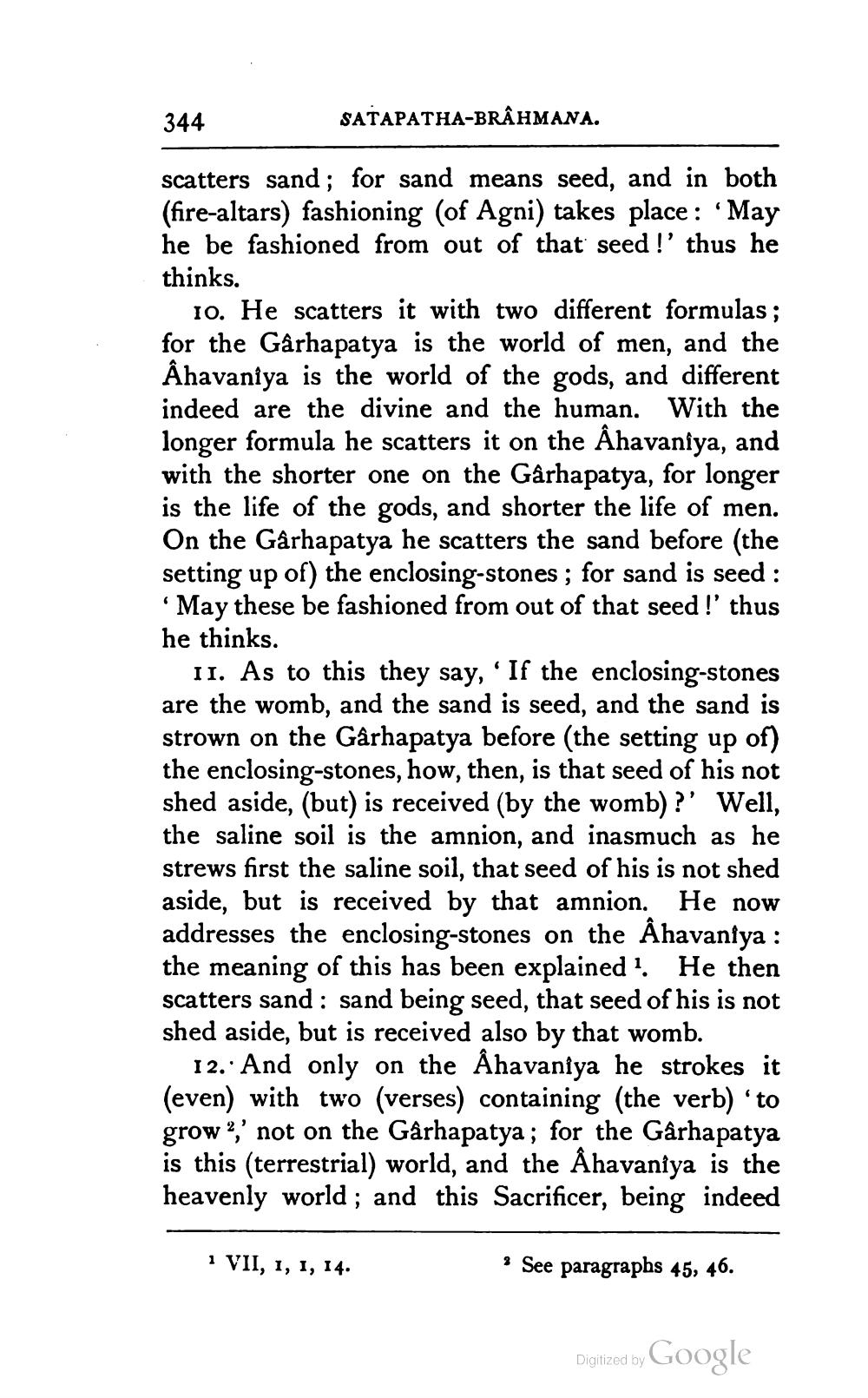________________
344
SATAPATHA-BRAHMANA. scatters sand; for sand means seed, and in both (fire-altars) fashioning (of Agni) takes place : May he be fashioned from out of that seed !' thus he thinks.
10. He scatters it with two different formulas; for the Gårhapatya is the world of men, and the Ähavaniya is the world of the gods, and different indeed are the divine and the human. With the longer formula he scatters it on the Ahavaniya, and with the shorter one on the Garhapatya, for longer is the life of the gods, and shorter the life of men. On the Gårhapatya he scatters the sand before (the setting up of) the enclosing-stones; for sand is seed : May these be fashioned from out of that seed !' thus he thinks.
11. As to this they say, 'If the enclosing-stones are the womb, and the sand is seed, and the sand is strown on the Gårhapatya before (the setting up of) the enclosing-stones, how, then, is that seed of his not shed aside, (but) is received (by the womb)?' Well, the saline soil is the amnion, and inasmuch as he strews first the saline soil, that seed of his is not shed aside, but is received by that amnion. He now addresses the enclosing-stones on the Ahavaniya : the meaning of this has been explained. He then scatters sand : sand being seed, that seed of his is not shed aside, but is received also by that womb.
12.: And only on the Ahavaniya he strokes it (even) with two (verses) containing (the verb) 'to grow?,' not on the Garhapatya; for the Gârhapatya is this (terrestrial) world, and the Åhavaniya is the heavenly world, and this Sacrificer, being indeed
1 VII, 1, 1, 14.
* See paragraphs 45, 46.
Digitized by Google




